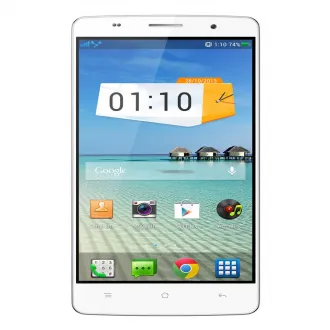Oppo U707 USB Drivers will help your Windows computer recognize your Android device. Then you can transfer files from computer to Android or even install the stock or custom ROM to your Android device.
Network: Technology: GSM / HSPA / LTE
Launch: Announced: 2014, March
Status: Available. Released 2014, May
Body: Dimensions: 152.6 x 75 x 9.2 mm (6.01 x 2.95 x 0.36 in)
Weight: 171 g (6.03 oz)
SIM: Micro-SIM
Display: Type: IPS LCD capacitive touchscreen, 16M colors
Size: 5.5 inches, 83.4 cm2 (~72.9% screen-to-body ratio)
Resolution: 1440 x 2560 pixels, 16:9 ratio (~534 ppi density)
Protection: Corning Gorilla Glass 3
Platform: OS: Android 4.3 (Jelly Bean); ColorOS
Chipset: Qualcomm MSM8974AC Snapdragon 801 (28 nm)
CPU: Quad-core 2.5 GHz Krait 400
GPU: Adreno 330
Memory: Card slot: microSDXC (dedicated slot)
Internal: 32GB 3GB RAM
: eMMC 5.0
Main Camera: Single: 13 MP, f/2.0, 1/3", AF
Features: Dual-LED flash, panorama, HDR
Video: 2160p@30fps, 1080p@60fps, 720p@120fps
Selfie camera: Single: 5 MP, f/2.0
Video:
Sound: Loudspeaker: Yes, with stereo speakers
3.5mm jack: Yes
Comms: WLAN: Wi-Fi 802.11 a/b/g/n/ac, dual-band, DLNA, Wi-Fi Direct, hotspot
Bluetooth: 4.0, A2DP
GPS: Yes, with A-GPS
NFC: Yes
Radio: No
USB: microUSB 2.0, USB On-The-Go
Features: Sensors: Accelerometer, gyro, proximity, compass
Battery: : Removable Li-Po 3000 mAh battery
Charging: Fast battery charging 20W: 75% in 30 min (VOOC Flash Charge)
Misc: Colors: White, Black, Astro Black
Models: X9076, X9007
Price: About 440 EUR
Tests: Performance: Basemark X: 14968
Display: Contrast ratio: 1123:1 (nominal), 1.691 (sunlight)
Camera: Photo / Video
Loudspeaker: Voice 69dB / Noise 70dB / Ring 75dB
Audio quality: Noise -93.8dB / Crosstalk -94.4dB
Battery life:
Endurance rating 44h
Step 1 — Download and extract the Android USB Driver to your PC.
Step 2 — Click Start (Windows) -> Control Panel -> Device Manager (Select Device Manager).
Step 3 — On the Device Manager window find and click on computer name to select Add legacy hardware.
Step 4 — Select Next
Step 5 — Selext Install the hardware that I manually select from a list (Advanced), and click the Next
Step 6 — Select Show All Devices afterward click Next button again.
Step 7 — Click the Have Disk button.
Step 8 — Click Browse button to find the extracted Android ADB Driver -> android_winusb.inf and click on Open.
Step 9 — Click OK.
Step 10 — Now select the Android ADB Interface -> click Next button.
Step 11 — Click Next button again.
Step 12 — Windows Security box will appear, to confirm whether you really want to install the Android USB Driver, so just choose the Install this driver software anyway.
Step 13 — Once you clicked the Finish button, then repeat from step 2 to choose Android Composite ADB Interface.
Step 14 - Done.
